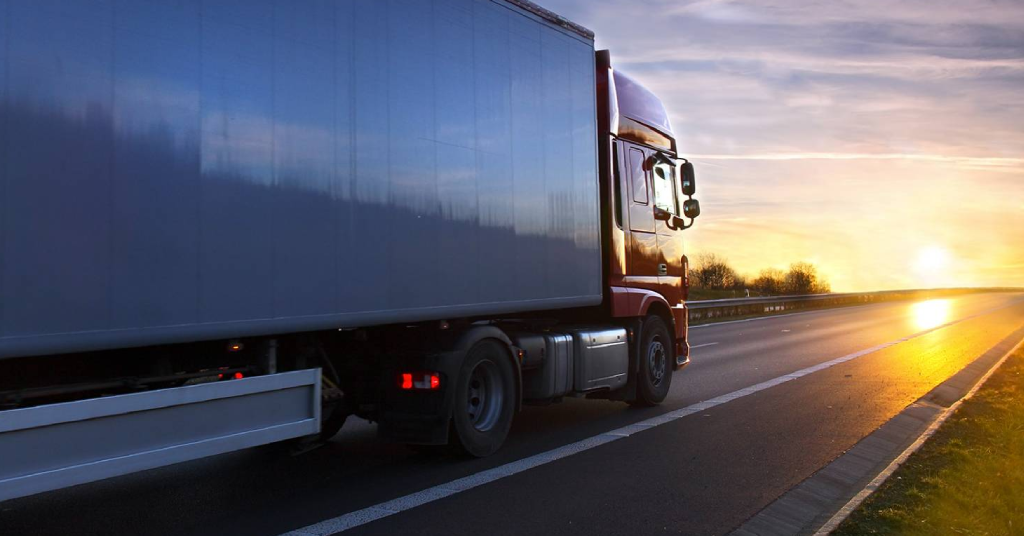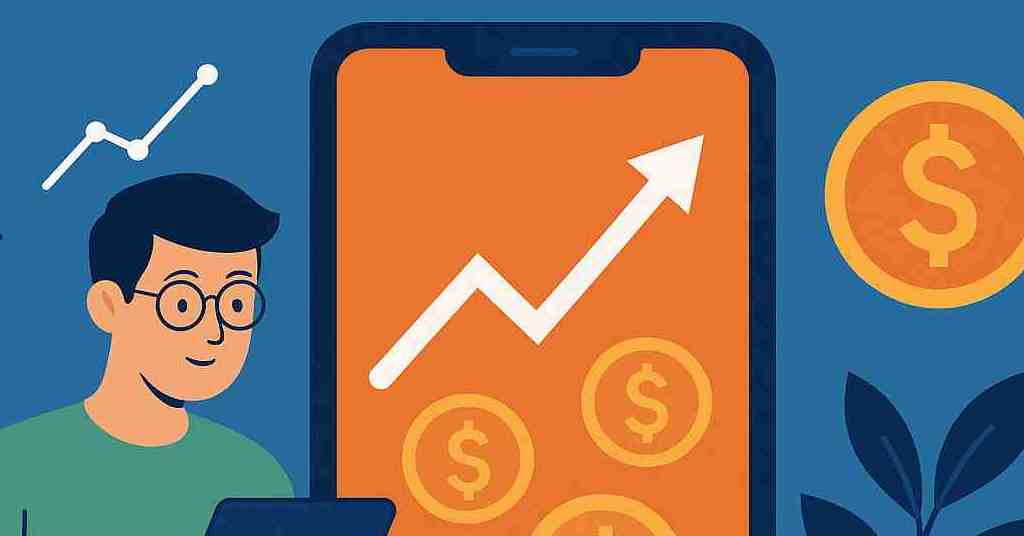
Scratch Logistics Mobile App Development Cost and Advanced Features
Because telephones are becoming smarter, a number of approaches are being discovered to apply them in business. The same holds true for logistics & transportation enterprises around the globe. For this reason, businesses running in this arena can effectively make a huge income by bringing their processes onto cell platforms, with the actions being executed through apps. Without a doubt, logistics and transportation companies play a huge part in the wider business environment all around the world. Loads of businesses are dependent on their goods being moved from one location to another within a reliable time frame. With the emergence of mobile apps coming to the rescue, these operations have become far more efficient.
The companies running in the logistics and transport industry are searching out custom mobile app improvement solutions that are not just concerned with their enterprise approaches, but also showcase the business as a hallmark of success, sophistication, and operational excellence. A unified wholesome logistics mobile app will look after managing your fleet, items, cargo info, routes, drivers and more.
Now we will discuss the capabilities, framework, and the variety in types of logistics & transport cellular app improvement.
Varieties of Logistics & Transportation Mobile App Solutions:
Fleet Management Mobile Apps
Fleet Management Mobile Apps All information regarding fleets and the vehicle sare recorded here. As a result, the automobiles assigned are consistent with the person’s necessities for the job. Also, all of the related information is managed on hand through the mobile app.
Logistics On-Demand Cellular Apps
The goods are introduced as consistent with customers’ requirements. With this solution, you can be sure that consumers have received the goods that they have opted for, and also helps you to time the after-sales process perfectly.
Mobile Apps for Warehouse Answers
With the information from warehouse apps, it’s possible to save a massive amount through efficiencies, and refer to statistics in a more simplified manner. This makes it easy for the groups to extract out the proper records without any delays.
Forwarding & Tracking Mobile Apps
Tracking apps allow you to be aware of force and fleet places. Monitoring apps make it easy to get real-time updates regarding routes taken and the location of items.
Logistics Mobile App Key Technologies
Logistic apps are generally used for coping with the transportation of goods. Below are diverse processes that can be included within an on-demand logistics mobile app.
User Panel
Registration
That is the first segment of the app that users will land on. They could sign-in using their email id or social networking credentials.
Choose Vehicle
A motor may be selected by the user, which they think they will require for transportation. To save on costs and for environmental friendliness, it will be suggested to select one bigger vehicle that can fit all goods, rather than two smaller vehicles.
Scheduling & Coping with Bookings
Bookings can be scheduled by using users in just a few steps. With the details on the user’s transportation requirements, all that will be left is an assigned date and time.
Notifications
The notifications and alerts related to deliveries, offers, tracking, and a number of different matters are dispatched to users.
Payments
All invoices regarding value incurred can be generated by the customers. Customers will also be able to view their payment and delivery history.
Rankings to Drivers
Users can rate drivers on their overall performance, behavior, provider quality and time adherence.
Track Shipments
Customers can track the route or track taken for goods and shipments in real-time so that you can identify whether or not the logistics service has taken the best course or not.
Estimate Fare Costs
This feature gives the user an idea about the anticipated fare of the job. This will be dependent on the delivery items, the destination spot and the course that needs to be taken from the pickup vicinity.
Get a quote
Users can request a quote from the service provider in order to get an estimated time & cost investment.
Driver App panel
Registration
In this section, drivers can log in using their email ID or even their social networking accounts.
Manage requests
All requests which have been assigned by the users are displayed here along with the status of the request. This section is managed to keep track of completed and pending shipments.
Analyze Shipper details
Information regarding the shipper, like Name, Contact Information, Address, drop off location and the Invoice generated can be analyzed and stored here.
Freight Details
This will include the distance required to be covered, fuel consumption, tool expenses, the weight of goods that are to be transferred, drivers generate freight details.
Route & Navigation
GPS allows the drivers to determine the appropriate routes to be taken to reach the destination. This way users and the admin can both be kept in the loop regarding the driver’s behavior as he makes deliveries.
Bill Approvals
Drivers submit the bills regarding fuel, toll charges, and refreshments so as to get them approved by admin.
Payments
Drivers can accept and record payments made by users whether online or via cash on delivery.
Admin Panel App
In order to maintain overall system integrity, admin can create their own account or can log in using their email ID or social network account credentials.
Dashboard
It is in this section where all the users, amount of pending and completed shipments, as well as other information regarding business insights, can be analyzed and monitored by the admin.
Monitor Drivers
From here the admin monitors and manages the drivers involved in shipping, and can view the number of orders which have been completed.
Manage Trucks, Tariffs & Shippers
It is from this section that the admin manages and stores information regarding shippers, vehicles and all additional costs incurred in making deliveries.
Push Notifications
Users are kept updated via notifications regarding order completion, payments, driver allotment and a lot more via notifications.
Billing & Invoice
From here the Admin analyses and approves all bills and invoices generated by users or drivers.
Trip log reports
Here the admin evaluates and records the trips that are taken by drivers by start and end times, along with the miles covered.
Fuel Consumption & Vehicle Management
This is the section where the admin records the number of vehicles running and the fuel consumed by them. Here the admin can also store and track entire management activities like whether the vehicles require maintenance services or not, the pollution involved in their journey and more.
Additional Features of Logistics Mobile App Development :
In-App Chat
Emails, SMS & Push notifications are a brilliant way to keep the users updated regarding the latest services and deals. Thus, enhancing user engagement with the app and allow them to stay attentive through real-time updates and notifications.
Live Stats of Delivery
This feature allows admins to monitor driver’s activities, and to assign tasks to them once they have accomplished prescribed ones. It also helps in enhancing fleet productivity and making good deliveries easy and transparent.
Multilingual Support
This helps when you have drivers who originate from a different region of the world. This feature is helpful in making business operations scalable.
GPS
This technology is used to determine the right routes to be taken. It allows the business to get a good understanding of locations that drivers have covered whilst on the job. Thus, it makes it easy to calculate the trips and the time consumed by the drivers for accomplishing the deliveries.
Real-time analytics
Using this feature, all activities related to business can be identified. The admin can access real-time reports regarding the number of orders captured, the region which captured maximum orders, fuel consumption charts, and a lot more can be generated to serve users in a more effective manner.
Driver Safety
This feature ensures on-duty drivers’ safety by monitoring their driving activities while making deliveries. According to the corresponding data, it scores their safety. The number of things such as phone usage, speed, and the frequency of handbrake usage is tracked.
Payment integration & Referral Rewards
Urge your users to take advantage of the premium services on your app by enlightening them about its many benefits. Also offer them transparent and secure payment mechanisms like PayPal or Braintree, along with multiple payment gateway options, such as Credit Card, Debit Card or Cash on Delivery.
Cloud Technology
With Cloud, it is possible to store heaps of business data safely. Besides, accessing data related to fleet and driver, order placements, and delivery. The cloud can also be used to store operational data in a very reliable manner.
Logistics Mobile App Development Technology Stack:
On-Demand Medicine Delivery Application Tech StackThe right set of technologies is required for developing a superior quality on-Demand logistics app. Below are options for you to include:
Cloud Environment – AWS, Google, Azure
Database – Oracle, SQL, MySQL MongoDB
Real–time analytics – Hadoop, Spark, BigData, Apache Flink, Cisco, IBM
Payments – Braintree & PayPal, Stripe, EWallets
SMS and Phone Verification -Nexmo, Twilio
Push Notifications – Twilio, Push.io




